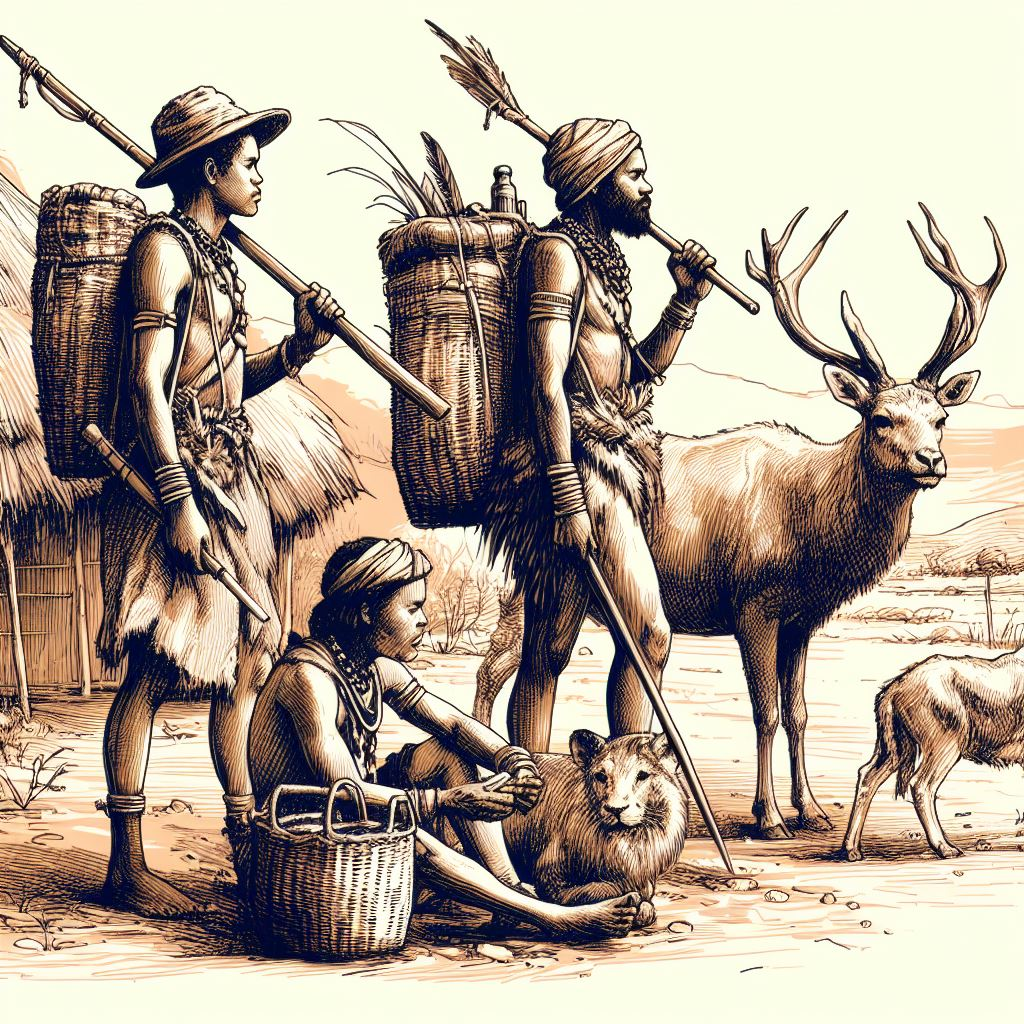Introduction
A rural society or also known as agrarian society is fundamentally structured around agriculture as the principal economic activity, shaping its social, political, and cultural systems. This type of society predominantly relies on farming (crop cultivation), livestock rearing, etc., as the primary means of sustenance and economic productivity. Unlike industrial or post-industrial societies, where manufacturing and technological advancements dictate economic growth, agrarian societies center their wealth, status, and livelihood on land ownership and agricultural output. These societies have historically served as the foundation for civilizations, providing food security and economic stability while also giving rise to complex hierarchical structures.

Features
Dependency on Agriculture
One of the most defining characteristics of an agrarian society is its economic dependency on agriculture. The vast majority of the population is engaged in farming activities, either as landowners or laborers, ensuring a steady food supply for personal consumption and trade. The agricultural practices vary depending on geographic and climatic conditions, yet the underlying principle remains consistent: land cultivation is the cornerstone of economic productivity. In many agrarian systems, farming is carried out on small family-owned plots, although in more complex societies, large estates controlled by elite landowners dominate the landscape. This economic model usually rely on seasonal cycles and environmental factors, making agrarian societies particularly vulnerable to climate change, natural disasters, and soil depletion.
Land Ownership determines Social Hierarchy (stratification)
In majority of agrarian societies, social hierarchy is reinforced through rigid stratification systems like caste systems in Indian context. The caste-based structures dictate occupation, social status, and marriage prospects, ensuring that land and power remain within specific groups. Such systems, prevalent in historical societies like India and medieval Europe, limit social mobility and entrench inequality. The persistence of caste-based divisions often results in deeply rooted societal challenges that persist even as industrialization takes hold.
Land ownership plays a major role in determining social hierarchy in agrarian societies. The distribution of land is often unequal, with a small elite class holding significant tracts of fertile land while a vast population of peasants or tenant farmers work the fields under their authority. This imbalance is the source of a rigid social stratification system, wherein those who own land accumulate wealth and power, while those without land remain economically disadvantaged. Historically, this division has led to feudal structures, where landlords exert control over peasant laborers in exchange for protection and access to farmland. In Indian context, the rigid social stratification system in agrarian society is known as Caste-System.
Social mobility in caste system is generally limited (restricted), as wealth is inherited and land remains concentrated within elite families for generations.
Household Level Production
The labor force in an agrarian society is primarily family-based, with agricultural production being a communal endeavor. In such societies, extended families often work together on the same land, ensuring that farming responsibilities are distributed among all members. The reliance on family labor reinforces traditional gender roles, with men predominantly engaging in physically demanding tasks such as plowing and harvesting, while women contribute through planting, food processing, and household maintenance. Children are often introduced to agricultural work at a young age, gradually acquiring the skills necessary to sustain the family farm. This intergenerational transfer of knowledge helps preserve traditional farming techniques and social customs.
Limited Division of Labor and Specialization
The division of labor in agrarian societies is dictated by the agricultural process itself. Farming activities such as plowing, planting, irrigation, harvesting, and livestock management require a coordinated effort among community members. Each task is assigned based on skill, gender, and social status, ensuring that agricultural production remains efficient. The reliance on manual labor and basic tools means that technological advancements are generally slow to take root in agrarian settings. While some societies develop irrigation systems, plows, and rudimentary machinery, large-scale mechanization is rare, as the agricultural workforce is abundant and labor-intensive practices are deeply ingrained.
Although agrarian societies exhibit some division of labor, specialization remains relatively limited. Most individuals are directly engaged in agriculture, with only a small proportion of the population taking on specialized roles such as blacksmiths, artisans, or traders. These specialized professions often emerge in larger agrarian settlements, where surplus agricultural production facilitates trade and commerce. Despite this, the economic structure remains predominantly agrarian, with surplus goods primarily serving local markets rather than large-scale industrial distribution. The limited diversification of labor means that agrarian societies do not experience the same degree of economic expansion as industrialized societies, which thrive on mechanization and technological innovation.
Adherence to Traditional Values and Customs
Agrarian societies are deeply rooted in tradition and custom, with agricultural practices and social norms often being passed down through generations. Farming techniques, religious rituals, and communal festivities are closely tied to the agricultural calendar, reinforcing a cyclical perception of time. These societies tend to be resistant to rapid change, as stability is prioritized over innovation. Cultural values emphasize community cohesion, respect for elders, and adherence to established norms, which serve to maintain social order. However, this traditionalism can also lead to resistance against modernization and external influences, sometimes resulting in societal stagnation.
Conclusion
The impact of industrialization on agrarian societies is profound, often leading to significant economic and social transformations. As mechanization and technological advancements increase agricultural productivity, fewer people are needed to work on farms, prompting migration to urban areas in search of employment. This shift results in a decline in traditional agrarian practices and the gradual dissolution of rigid social hierarchies based on land ownership. Industrialization fosters economic diversification, leading to the emergence of manufacturing, services, and information-based industries. However, this transition is not always smooth, as rural populations often face economic displacement and cultural disruption.
Agrarian societies serve as the bedrock of human civilization, shaping economic structures, social hierarchies, and cultural traditions for centuries. With agriculture at the core of their existence, these societies exhibit distinctive characteristics such as land-based wealth, family-centered production, limited specialization, and a strong reliance on tradition. While agrarian economies have historically sustained large populations, the advent of industrialization has gradually diminished their dominance, leading to urbanization and economic diversification. Nevertheless, the legacy of agrarian societies continues to influence modern agricultural practices, landownership patterns, and social structures, offering valuable insights into the evolution of human communities.


